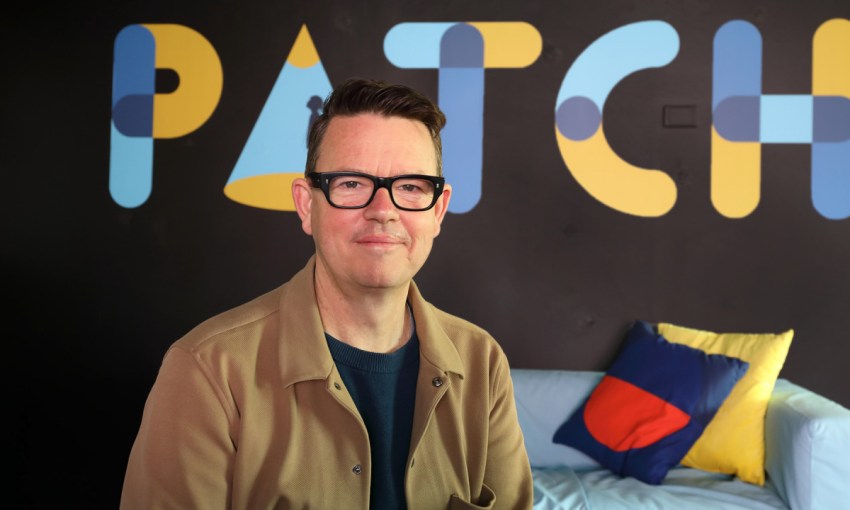Geoff Cobham is the artistic brain behind some of SA’s most awe-inspiring creations – Adelaide Festivals, mind-bending light shows and now Patch Theatre. His partner, Restless Dance Theatre’s Roz Hervey and their daughter, actor Tilda Cobham-Hervey, share his love of the arts.
“I never really left the world of make-believe”
Where did you grow up?
I grew up on a farmlet in Moolap on the Bellarine Peninsula near Geelong in the 1960s, with my parents Heather and Alan, who were teachers, and my older sister Annette. Ten years after I was born my little brother Ben joined us.
Can you paint a picture of your childhood?
I was a free-range child and spent many hours either roaming the countryside with friends or alone creating my own worlds in our paddocks. I would build underground cubbies with nine rooms, all connected with garden hose phone lines with funnels for handsets. We also spent many hours on flying foxes flying between trees.
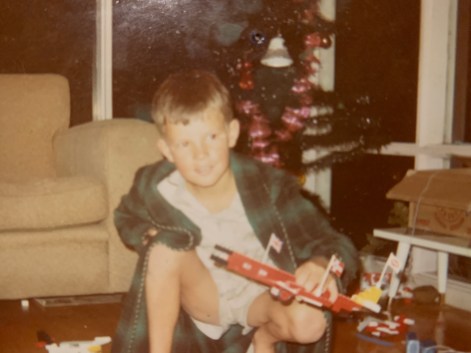
What did you want to be when you grew up and why?
I honestly cannot remember ever even wanting to grow up. At 15, I was very happy playing with Lego and reading science fiction. I think I ended up in theatre exactly because it is a job where I could continue to play. I never really left the world of make-believe.
Were you always interested in theatre? Where did this spring from?
My grandma was an arts lover: she introduced me to the magic of theatre. We also shared a love of books. In my teens, I used to go to drama camps in Melbourne where I found my people. I was so shocked and delighted by universal left-wing ideas and particularly indiscriminate hugging. Theatre is a bubble of very like-minded people. I know it sounds corny but we really are one big family.
What did you study when you left school?
I studied Drama, Dance and Design at Rusden State College. It was post-Whitlam and we had four studios and three fully-equipped theatre spaces and a couple of dance studios. We had teachers from all over the world who were experts in their fields, and it was all free. The design course was unique. They literally locked us in a studio for six hours with projects like this: a room with three giant blocks of foam, 20 lengths of bamboo, 10 rolls of gaffer tape and said through the keyhole: “Little Red Riding Hood, in the style of Lichtenstein.” We did a different one of these every few weeks. I learnt a lot about design and improvisation but mostly I learnt about collaboration and learning to love and embrace compromise. I also learnt that I was a terrible actor and dancer and definitely belonged behind the stage!
How did your career progress?
I spent 40 years as a freelance designer and production manager, going from job to job, often doing 10 shows a year. My current role at Patch Theatre was the first job I applied for and the first time I have had holiday pay! All my other work was contracted for a fee: until I stopped I had no idea how debilitating this was. Every four or so weeks I would have a production “week” where we work 10, 13-hour days and during this you still had to stay in touch with two other creative teams on the next shows and try and have a family life. If you divided the hours worked by the fee, it usually came out at about $15 to $25/hour. However, we definitely do not work in the arts for the money, and I have been very lucky to have had regular work, and most of it has been a delight.
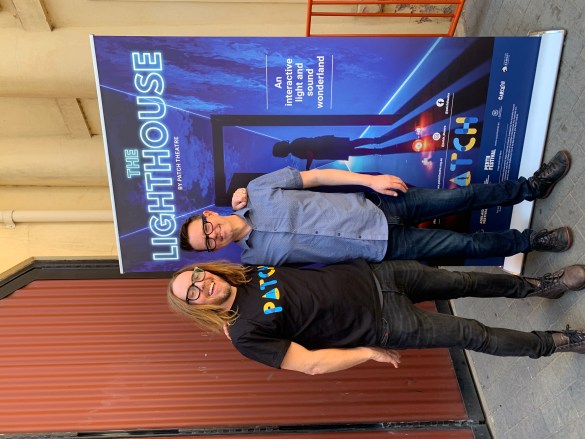
What are some of your most memorable projects in your capacity as a designer?
I was the Designer and Production Manager of many Adelaide Festivals and got to work at the pointy end with Anthony Steel, Barrie Kosky, Robyn Archer and Paul Grabowsky. I led amazing teams of artists to create many memorable festival clubs: Red Square, Persian Garden, The Squeezebox and Barrio.
Tell me about your time at Force Majeure?
In amongst Festivals I collaborated with my partner Roz Hervey and director Kate Champion to create dance theatre work for Force Majeure. Over 10 years we created six highly acclaimed full-length works. We developed our own distinct style and a magical working process that we never attempted to understand. Most of the collaboration between us was unspoken. It was a unique time that helped me become confident to see myself as an artist.
You were then the resident designer at State Theatre Company for six years – what did you learn during this time?
My next major collaboration was with Geordie Brookman at State Theatre. Geordie is one of the few directors who not only loves lighting but he also understands how to use it. Together we took a radical approach to set and lighting design, focusing on creating emotional spaces rather than locations, perhaps most memorably with the award-winning Little Bird, a show all about transformation that starts in a small white box and unfolds to fill the space with grand lighting gestures. We also did a show on a continuous revolving bright blue cube and in a stage covered in water, which also had waterfalls and rain! Having access to a team of full-time, highly talented builders and a fully equipped workshop was a great experience, and one that is rare in this country.
Who are some of the creatives you’ve collaborated with who inspire you?
The inspiration for Barrio (the Adelaide Festival Club in 2012 and 2013) came from a unique group of locals led by a guy named Fruitcake. Fruity is all you would hope from his name – a true eccentric, son of a preacher, ex-baker, current fish transporter and good with asphalt. When I was designing a club for Paul Grabowsky’s first Adelaide Festival I wanted to create an iconic and surprising venue in Elder Park. I had a dream of building a classic SA jetty on land. Whilst musing about this one day, a fellow artist claimed that a mate of his had an old jetty in his backyard … sure, I thought. Anyway we drive to the southern suburbs to a very large block of land and Fruity took me to an old rundown shed on his property. And there it was … a giant jetty, which we subsequently moved temporarily to Elder Park. Strangely this was not the amazing part of the trip, which was my first meeting with Fruitcake.
What was it like inside that shed?
As the door cracked open and a slice of sunlight pierced the darkness I knew I was in a place of worship. Inside were six amazing bars, like you might find in the backstreets of South East Asia or the deep south of USA, each one a shrine to one type of alcohol and each championed, decorated and tended by one eccentric Adelaidian. I was to discover that the bars in the shed were the tip of the iceberg. Fruity and his mates ran their own events, Safari, where they all dressed up in safari suits and went on pilgrimages, with local bars as the touchpoints, culminating in the presentation of the Don Dunstan Award on the Popeye, not to mention the clown road trip … but that is a whole other story. I was humbled by the depth of the powerful community this had grown from, and the genuine cultural richness it represented. I had just been on a European Churchill Fellowship-powered quest to find just this sort of thing … and embarrassingly it was in my own backyard.
What is so magical about lighting – how does it transport us?
Every time I get to play with light it amazes me all over again. It really has dominated my working life and is a part of everything I do. It is such a mercurial force and our recent Festival show The Lighthouse was described as my love letter to light. In groups of 30, the audience explores The Lighthouse, spending 10 minutes in each of the five chambers. In each room, light is explored in a completely different way and in all the flavours it comes in: lasers, UV, tiny beams, as pixels, even as fireflies. We get to see how it interacts with sound, people, glow floors, bendy mirrors and through mist and giant bubble columns. It has been enjoyed by all ages. One of my favourite audience members was a 91-year-old woman who got involved in every aspect of the show and said she was “so glad I managed to stay alive to see this”!
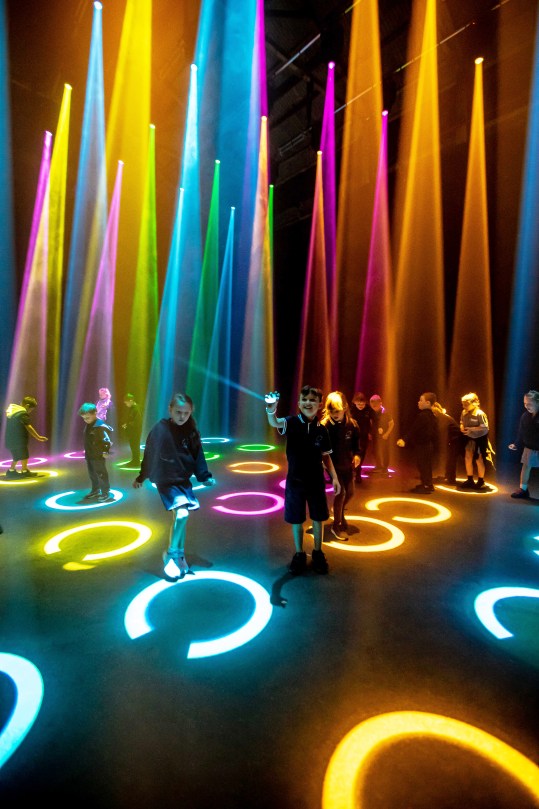
How did you meet your partner Roz and what did you love about her?
I met my partner Roz Hervey 34 years ago at an Adelaide Festival. We were both working for One Extra Dance Theatre on tour from Sydney. When we got to the accommodation, the company asked if two people wouldn’t mind sharing a room: without talking to each other we both put our hands up! Roz is currently the Creative Producer at Restless Dance Theatre.
We have two children Tilda, 26, and Huey, 16. We never got married as we have enough drama in our work lives – the last thing we wanted was to organise another major event. However, when Tilda was 12 she organised a “surprise wedding” for us, complete with interstate guests, mock priest, ring pull rings. It was fabulous; we did not have to organise anything, and it was a complete surprise. I had a 30-minute bucks night in the shed while Roz had a hens night upstairs. The whole thing was over in a couple of hours and we had a lovely big dinner at a local restaurant with all the special people in our lives: perfect!
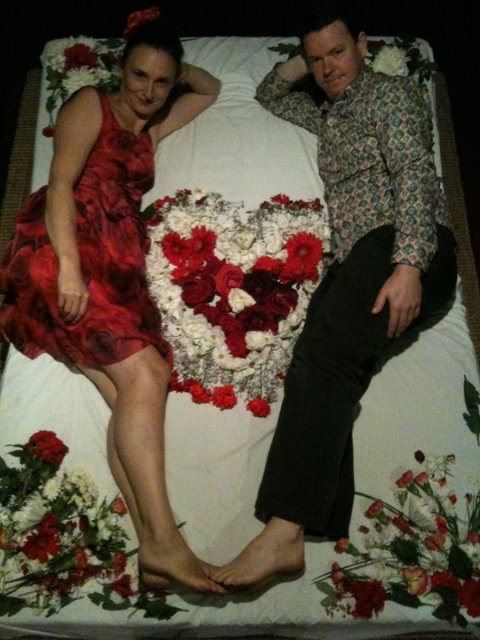
It has been said that you are an “arts-driven family” – why are you so passionate about the arts?
Art is our work and our hobby. Our family trips have often been on the end of a tour and often revolve around a festival. Tilly got involved in our arts world very early and I remember feeling so proud of seeing her and Roz performing together in Force Majeure’s The Age I’m In, when she was 13. The show had a performer from every decade, from 10 to 80. Huey is not so into art and still rates the three days we spent at Venice Biennale as his worst holiday ever. If we try to get him to come to a gallery now he will ask if it is better than the Biennale: sadly the answer is often no! However, we discovered you do not have to be in the arts to be creative. He has a wide range of interests that has broadened our horizons and fascinating to see him applying creativity into non-arts interests. Huey goes to Urrbrae Agricultural school and is interested in surfing, cooking and winemaking.
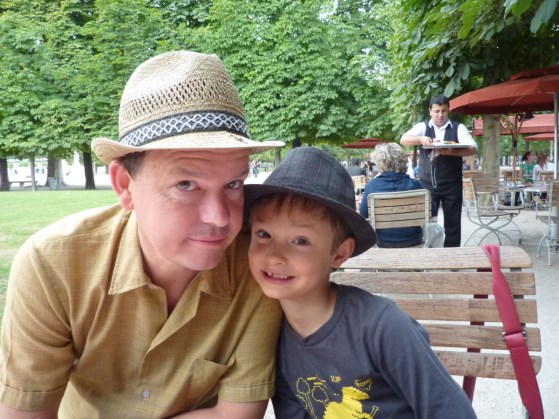
Tilda is now an actor of some acclaim. You must be very proud to see her succeed in the arts?
Tilly was always going to end up in theatre and film; most of her early childhood was spent pretending to be someone else. She was fortunate enough to land a role in a film called 52 Tuesdays when she was in year 12. It was actually shot every Tuesday for a year. It has been amazing to watch her explore all aspects of film-making. She is currently writing the first draft of a script for a feature film, following the success of A Field Guide to being a 12-Year-Old. Although she lives in LA, now she still talks to us most days.
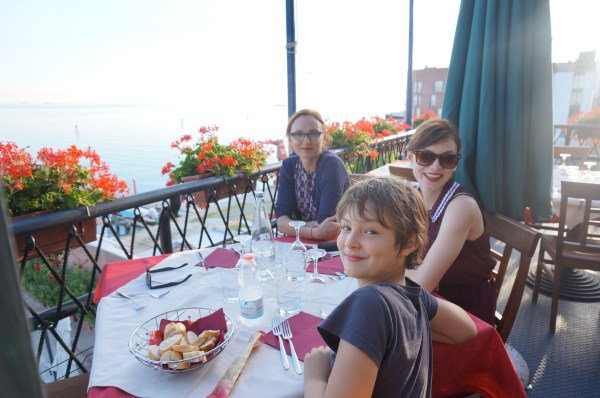
You are now at Patch Theatre, creating shows for children and families. Tell us about that.
Unusually, I am an Artistic Director who has had little experience directing actors: my speciality is design and production management. When we create shows I work collaboratively with a large team of artists; directors, animators, composers, technical wizards. All our work is devised – the team is set tasks that they respond to in any way they choose, with an image, a poem, a piece of movement, a lighting or projection idea. If we work with a writer, they are helping us with structure rather than words. The design team will often present the performers with a magical tech idea that needs a context. I oversee all aspects of the creative process and work closely with Maddog, our maker in residence, to realise all the design ideas. The collaboration is an endless process even after the show opens, the team is still looking at ways to refine the work and respond to audiences reaction.
What do you love about your role there and what are your challenges?
There is a huge responsibility in being most children’s first experience of theatre and art. I always feel the pressure to make it amazing and unique. Hopefully they will be the theatre lovers of the future. We are always checking the experience; I often try on my five-year-old self to see how the experience would feel to me. Theatre can be a disempowering experience for a five-year-old; you have to sit still and be quiet in rows of seats and grown-ups pretend to be people and things! At Patch, our shows are mostly non-verbal and we ban “shushing”. I sit amongst the audience and listen to their narratives, talking about what they are seeing is the way most children process the experience. The “lens” they are looking through is often the perspective of an artist. We try to be good listeners and attempt to channel “child logic” in our work. Strangely, one of the challenges is that our young audience do not buy tickets, so we make work for them but must market to their adult gatekeepers.
I am really enjoying the new path Patch is taking, our work is expanding to connect with families with installation-based work that spans theatre, art installations, science experiment and rave!
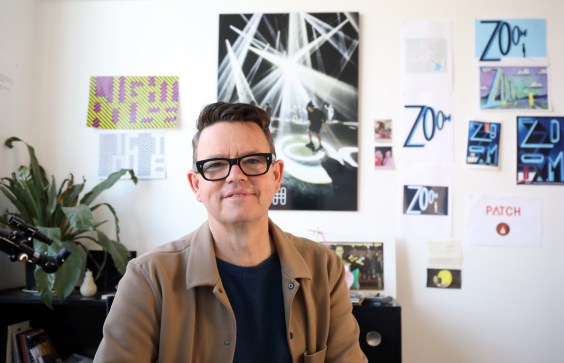
What drives you in work and life?
Spend the arts money where the audience can see it. Keep an eye out for the design accidents and follow their lead – they often take you to a simplicity you could never manufacture. Embrace existential awe: the “everything” is beyond comprehension but that need not be terrifying. I now see it through my five-year-old eyes and it is just wonder. I have tongue in cheek told my children to set the bar low to ensure happiness. I think what I mean is be grateful and happy with where you are and what you have achieved.
Do you see yourself as a storyteller?
I am not a storyteller. I make environments/atmospheres for the audience to create their own narrative in. I now deal in making abstract art for kids, as they are the perfect audience for this form. They are not interested in a linear narrative and can string together many stories from the feeling they get from what we present to them. I instinctually know when something is right but I often don’t understand it till a child tells me what it means! The actors, other creatives and I have a loose through-line that we use to tie it all together but we deliberately assume our audience is emotionally smarter than us. Their agency as audience members is at the forefront of what we do.
What does the future hold for you in work/life?
Working with light really is a case of the more I learn the less I know, and no doubt I will continue exploring its wonder even after they stop paying me!
My South Australian Life is a first-person series, published each Sunday. Read our previous profiles here.



